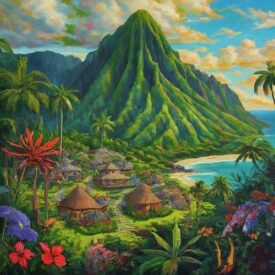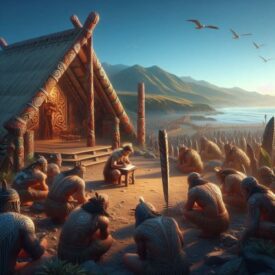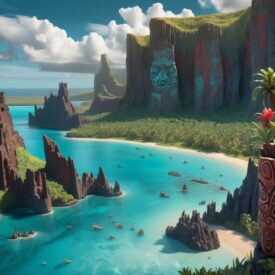Polynesian Mythology
Polynesian mythology corresponds to all the stories, myths, legends, and oral traditions of the different islands of Polynesia. This cultural area of Oceania was populated by travelers from Tonga and Samoa, who later populated groups of islands to the east, such as Tahiti, the Marquesas Islands, New Zealand, and Hawaii. The different Polynesian languages are close, and there are many cultural similarities between the other groups.
In the Polynesia region, coconut was considered the staple and most widely collected food. For this reason, the Polynesians believed that the fairest thing for them was that the universe was all contained within a giant coconut; and that all humanity lived there. Under the giant coconut was the “cause take”; they called thus the root of all existence and the universe. Then the god Vari, who was the creator of the entire universe, lived in the stem of the coconut and used the vitality that the stem had to create the universe.
Polynesian mythology is mainly composed of a great diversity of gods, which are similar on all their islands; although presenting a small variation in terms of the names of these gods on each island. The various oral traditions of the Pacific Islanders provide a unique and distinct view of the past. They are known for their use of metaphor, personification, and allegory. Legends and stories are commonly considered to be the main forms of storytelling in these cultures.
Unlike writing, oral tradition does not limit the scope of the story. It can change according to the setting and the needs of the narrator. The goal of oral literature is to provide a deeper understanding of the present. Contrary to Western tradition, the purpose of oral literature is not to provide a historical perspective but to affirm and justify the present.
A genealogy is an example of a storytelling form that consists of several contradicting and conflicting versions. The purpose of these is to emphasize the ruling line’s political legitimacy and the right to exploit resources. In order to maintain its position as the most prestigious line in the family tree, a new line had to be established. This line had to be derived from the ancestors of the preceding dynasty. Each clan or island has its own interpretation of the story.




